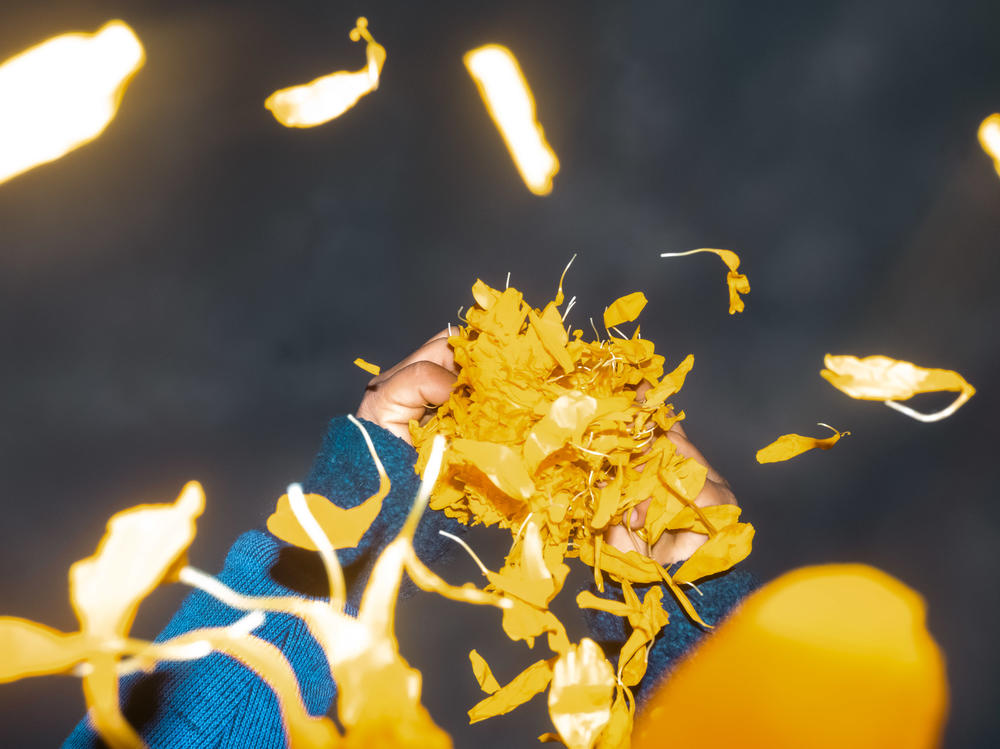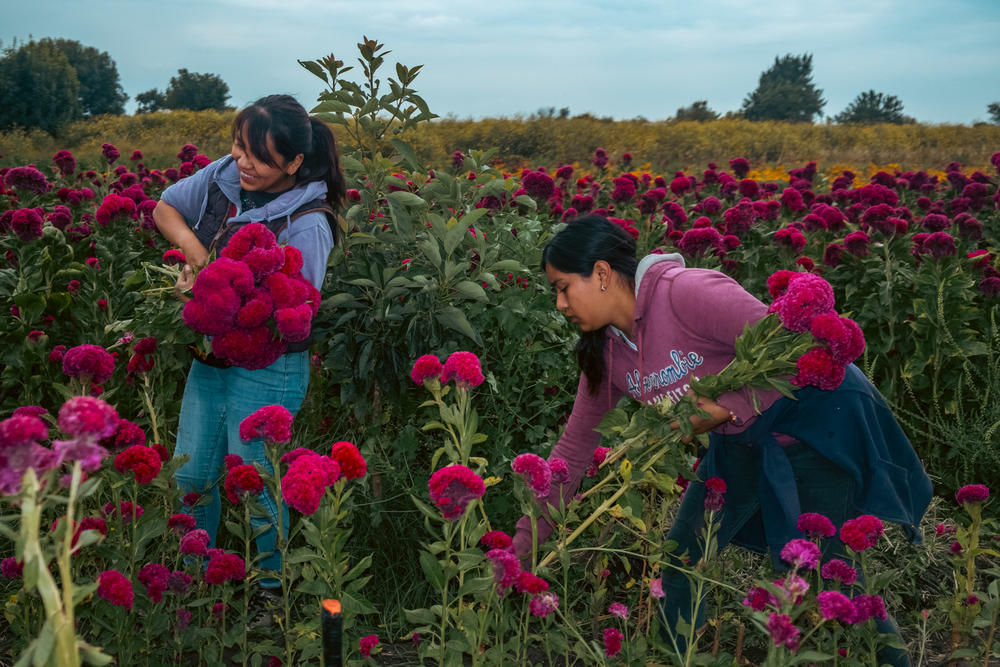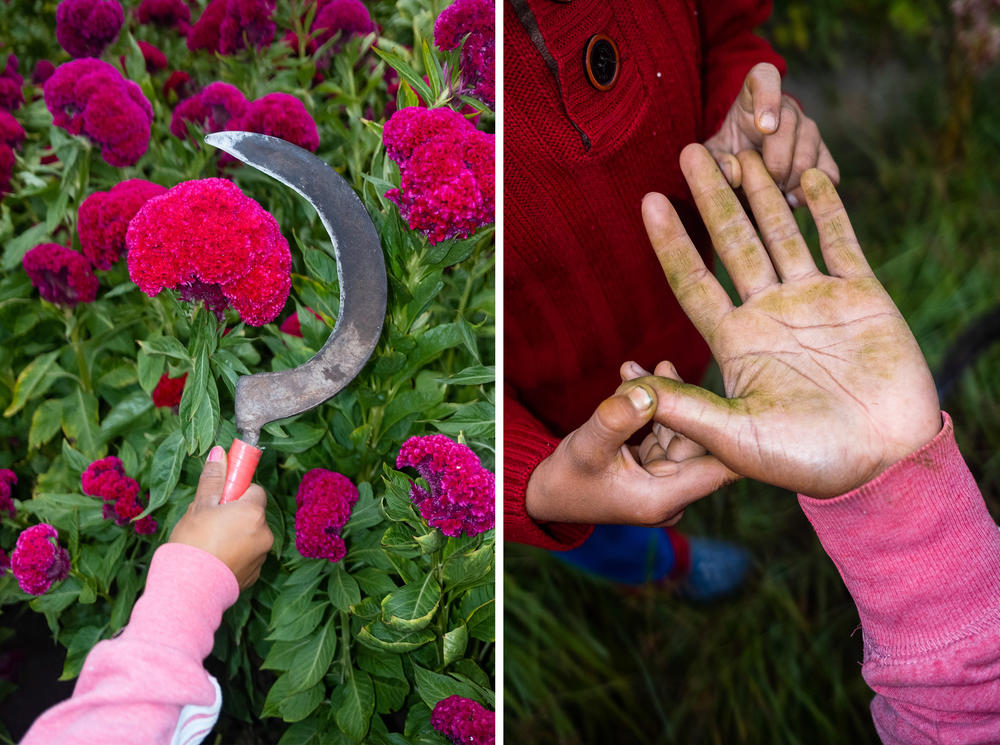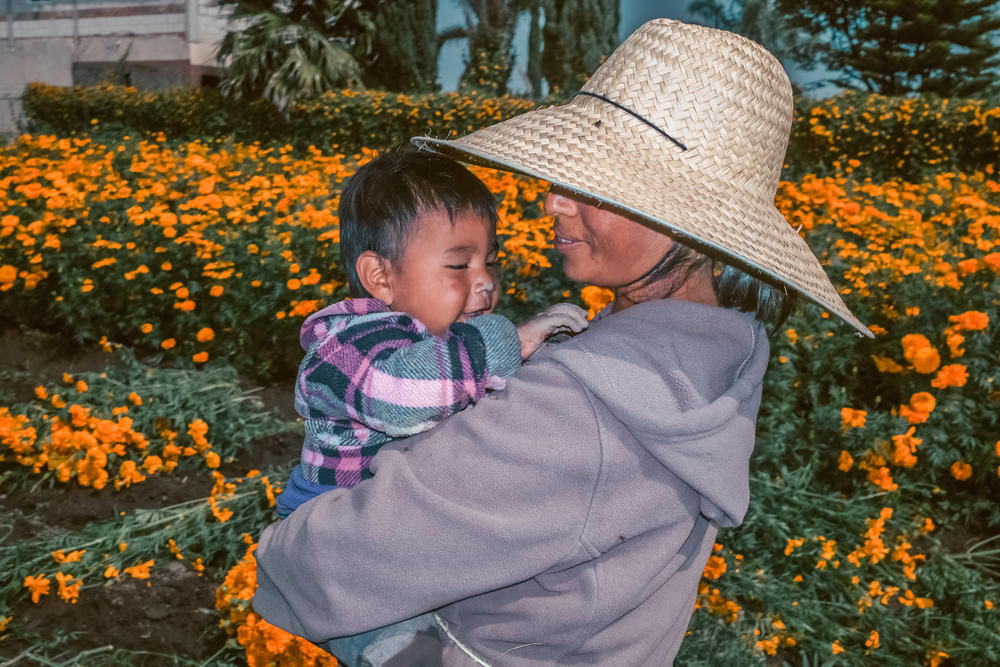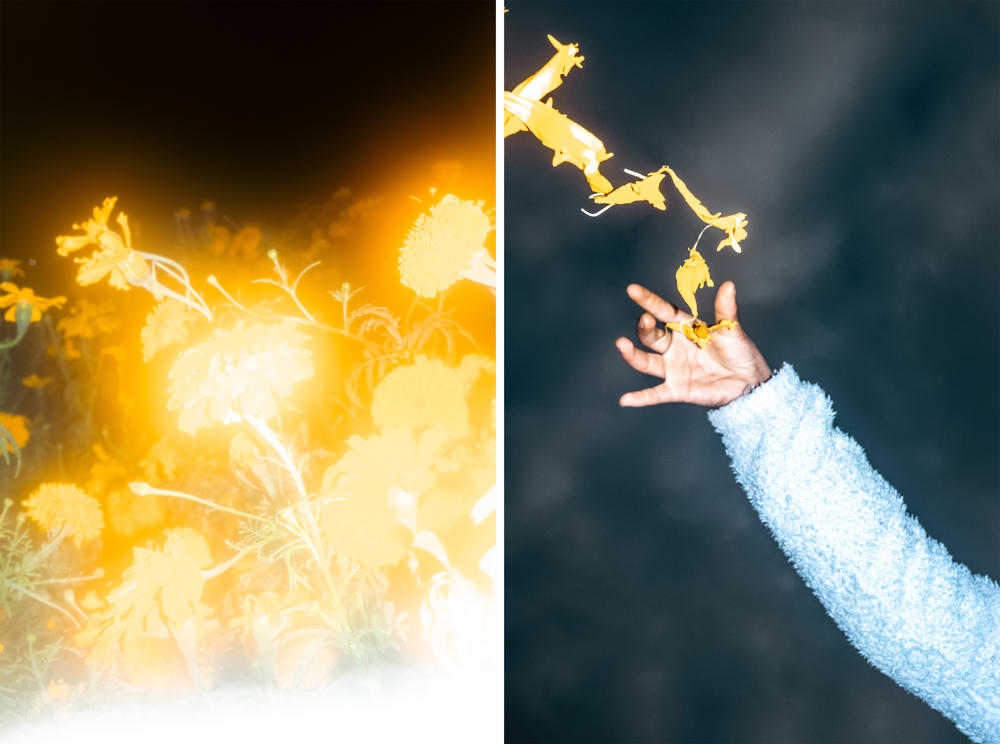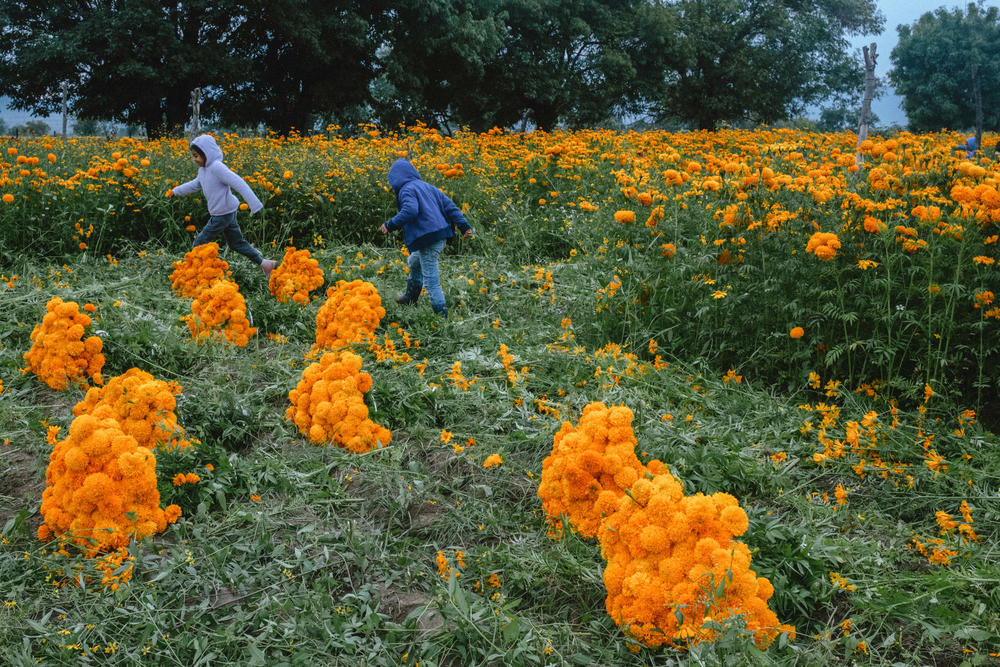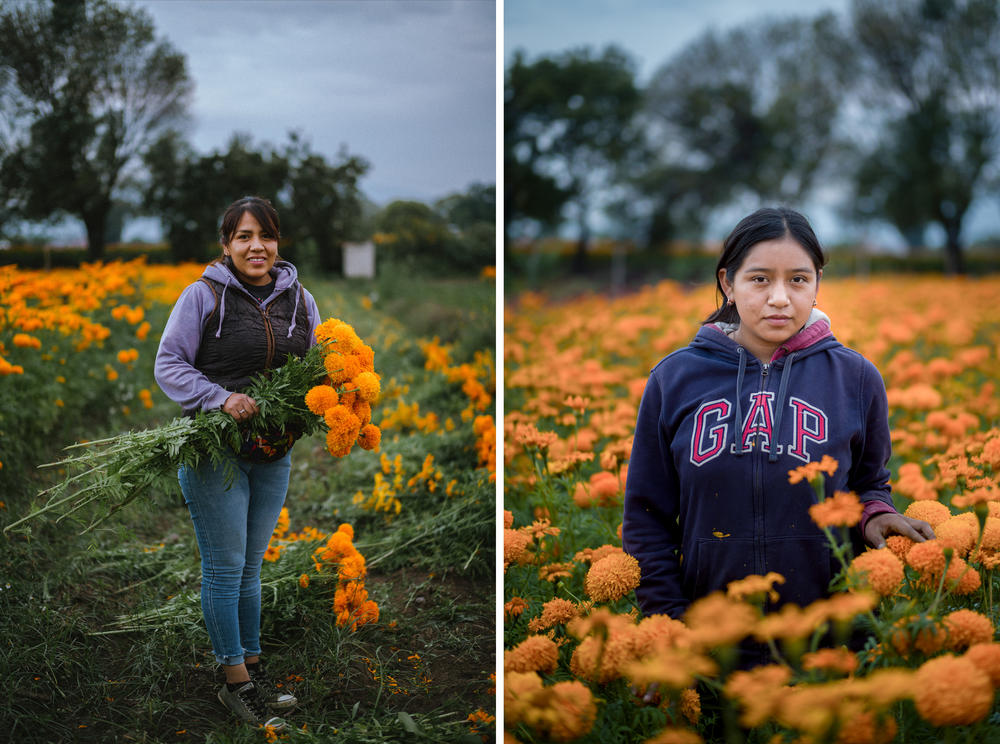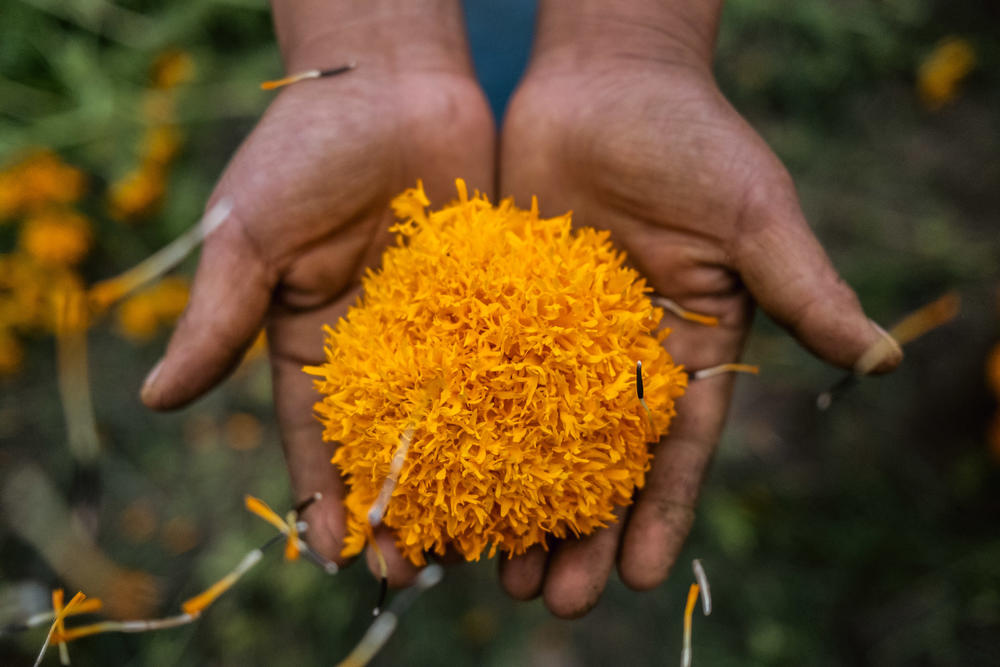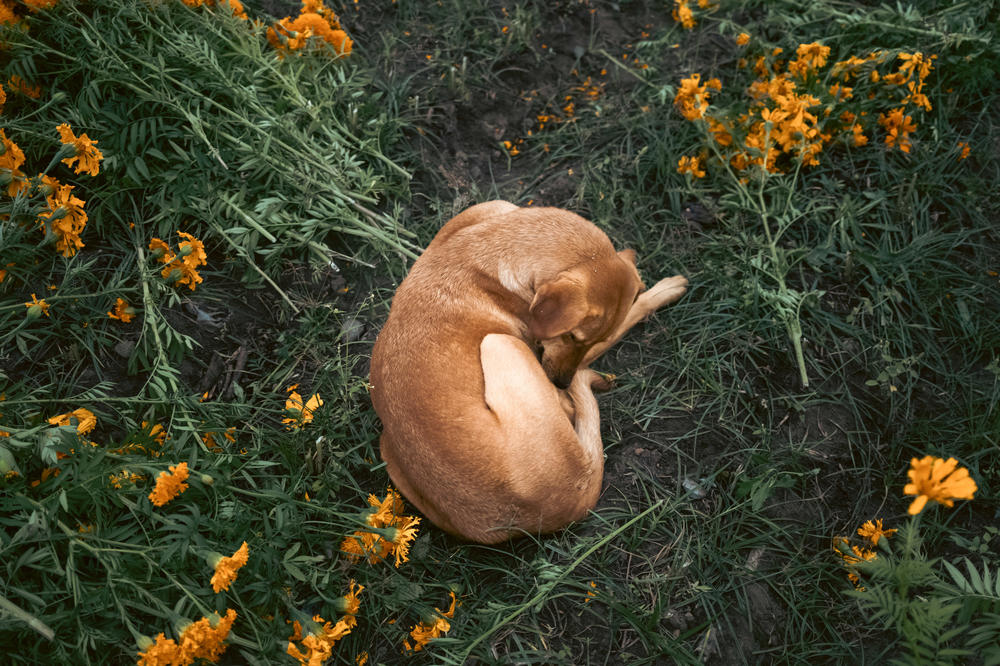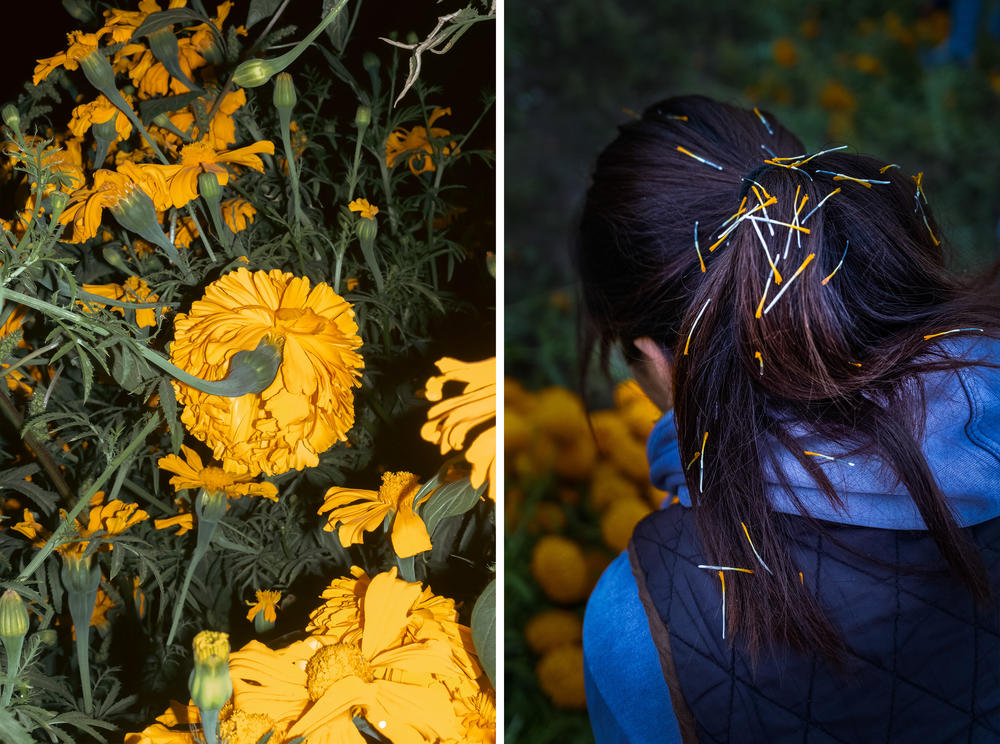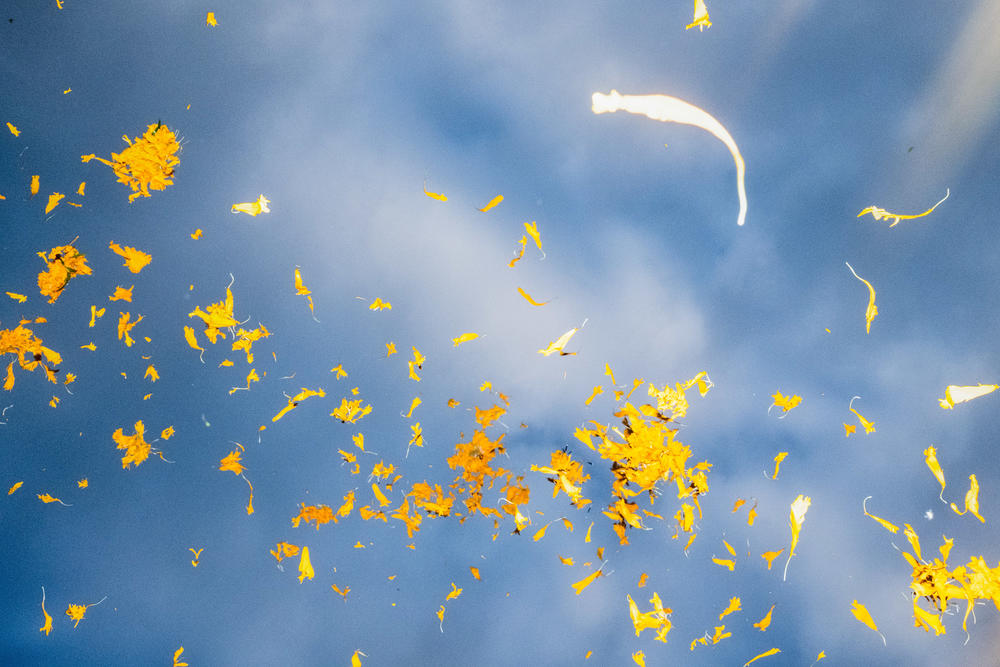Loading...
Section Branding
Header Content
Meet the families harvesting the flowers that guide souls home on the Day of the Dead
Primary Content
In the fields of Atlixco, San Fúlix Hidalgo, San Pedro Cholula and San Gregorio Zacapechpan in the central Mexican state of Puebla, golden flowers shine like the sun next to an elegant purple flower. These flowers are the "cempohualxochitl" or "cempoalxóchitl" which in Náhuatl, means "20 flowers" because it appears that inside the flower there are many more. The purple flowers, called "terciopelos," which translates to "velvet," are also cultivated in Africa and Asia.
The "Cempoalxóchitl" flowers are known as "Cempasúchil" in Spanish.
For these flowers to adorn Mexican homes, there are thousands of farmers in the country working to plant them, and at the end of October, they begin to harvest, as is the case of Sara and Miriam Ramirez. They come together to harvest at their sister Rosalba's plot of land. Sara is in her 30s, a single mother with two sons, Pablo and Jesus. Her children accompany her to the fields, where she earns $0.61 for every batch of flowers she harvests. Together, the family works six-hour days, three or four days a year.
Harvesting is a tradition in this land. Just like Sara and Miriam, the Marin family of San Fúlix Hidalgo gathers to harvest at dawn. Virginia Marin Solis, 68, says that since she was a child, her mother taught her how to sow, spread the seeds in the field, wait for the rain and, two months later, harvest. Today Virginia shares this once-in-a-year tradition with her children's partners, Maria Fernanda Hérnandez, Miriam García Reyes and Maria Azucena Violante. The women also bring their children, Abril, Alonso and Roxana, to the fields to pluck the cempasúchil, run through the tereciopelo and play in the fields while their mothers work.
The work of harvesting the flowers is essential at this time of the year so that the women can keep food on their children's plates year-round. Their work is also important for the flowers to reach the ofrendas — altars where food and drinks are offered up for those in the family who've died. Our ancestors in Mexico believed that the cempasúchil had the power to shield the rays of the sun, which served to guide the path of the dead who return from the Mictlán (the underworld, where the dead are) every Nov. 1 and 2 to celebrate with the living: the Day of the Dead.
Click here to see more of Koral Carballo's projects.
Copyright 2022 NPR. To see more, visit https://www.npr.org.
